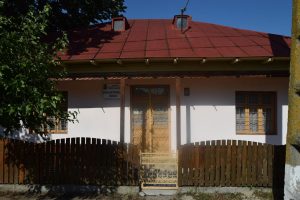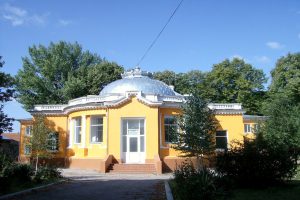

Built in the beginning of the 18th century, it was successively rebuilt after the damages suffered and the earthquakes. The fortress, a defense tower inspired by Balcan Turkish architecture, entered the Romanian space staring with the 16th century, reaching its peak during the first part if the Phanariot century.
In the beginning of the 19th century, brothers Nicolae and Ioniță Bâțcoveanu, logothetes of the Metropolitan, govern the fortress. In 1878, the fortress is modified and loses its upper part. The fortress is visited by Nicolae Iorga in the 30s. At the end of the 60s the fortress was deserted and ruined. Nowadays, although redone, with its top floors restrored, the fortress is abandoned again. The fortress is in the same perimeter as the Costea Mansion, built by the Costea landowners, it seems in the 19th century. The mansion is redone in the first half of the twentieth century. Becoming a CAP location after the nationalization, it is currently deserted and ruined.
The fortress has a square compact plan, being the smallest fortress from all that have lasted. It is sooner a defense tower than a fortified living house. The restorations in the last decades have rebuilt its upper part, currently having three levels. On the ground floor there is the basement, with access from the exterior. Access to the floor was done through an exterior stairwell, gone today, that possibly dated since the 1878 restorations. The second floor is entirely occupied by a wooden turret, with ramparts in the wall parapet. The fortress does not have any windows, only ramparts.
In Romanian, the term culă (fortress) has the following meanings: „1. In medieval architecture: defense tower; 2. Fortified landowner house, with more levels, spread in the 18th century in Oltenia and Wallachia; Arched basement”. The forms and similar meanings for this term are found in all Balcan languages, including Turkish where kule means „tower” and Kale means „fortress”. From Turkish comes the name of our famous island, today under the Danube water, Ada-Kaleh ”Ostrovul-Cetate”. Romanian words synonim to fortress are: chapel, cell and scaffolding.
Because fortresses are not found in other areas in Romania other than Oltenia and Muntenia, researchers think their model was in the Balcan Peninsula. Some specialists push the origin of the fortresses to Afganistan and Iran. Still, the fortresses are found on the plains of some Western European countries, like Italy, France and Spain.



